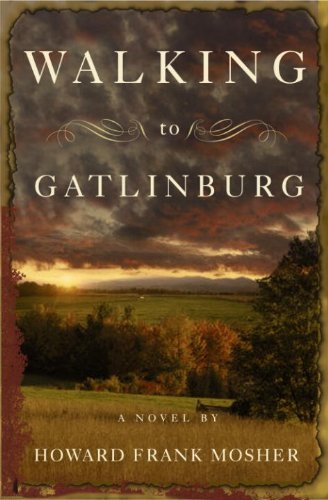Walking to Gatlinburg
Part tall tale, part historical fiction, this book opens in northern Vermont in 1864 when young abolitionist Morgan Kinneson neglects his duty to runaway slave Jesse, only to find Jesse hanged. Jesse’s hangmen then pursue Morgan south through war-torn America as he tries to find the whereabouts of his brother, Pilgrim, who disappeared from the Union army after the battle of Gettysburg. Morgan follows the symbols on a mysterious rune through a series of abolitionist safe houses beginning with the Erie Canal, then to Elmira, New York, and through Pennsylvania Dutch territory to Gettysburg. At each stop he refines his sharpshooting skills and either kills or eludes the ruthless murderers, who will stop at nothing to ruin him. His search carries him further south to Richmond and the Blue Ridge Mountains, where he encounters the hill people and their folk customs.
This novel engages from the first chapter. Mosher’s style is reminiscent of Mark Twain and Henry David Thoreau, with his detailed descriptions of wilderness and his weaving of realism with a wry view of human nature. The reader roots for young Morgan at each twist and turn, holding one’s breath at each possible calamity, and ever wishing for Morgan’s success. Filled with regional color, Mosher lends life and excitement to this clever tale.










